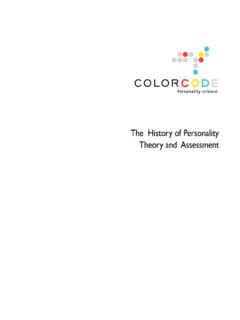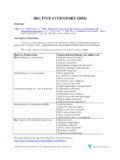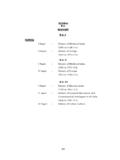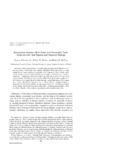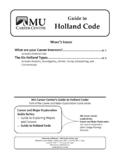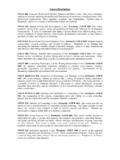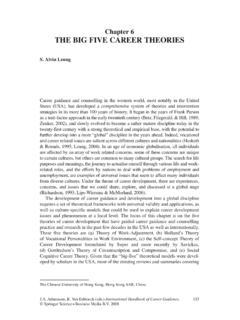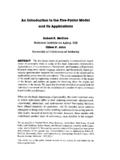Transcription of Foster and Adoption - Action For Child Protection
1 IDENTIFYING AND VERIFYING THE SAFE Foster HOME A STUDY AND ASSESSMENT METHOD A TRAINING SUMMARY Copyright Action for Child Protection . Inc. Permission To Copy Granted Action FOR Child Protection Action is a private non-profit organization dedicated to the systematic advancement of safety intervention case practice and decision making in public Child protective service agencies. Action s consultation, technical assistance and training emphasizes and supports the creation of effective and accountable safety intervention systems; competent CPS staff; expert supervisors; useful practice and decision making methods and relevant training that result in children being protected and caregivers restored to their protective role and responsibilities.
2 THE SAFE Foster HOME The Safe Foster Home assessment method provides an agency with a comprehensive understanding of the individuals and families applying to be Foster families or families serving as Foster families. It examines all aspects of the family functioning, including motivation for and commitment to becoming an Foster home. FEATURES OF THIS METHOD The assessment method uses a force field analysis methodology to examine the strengths present in a home. The method evaluates the significance of strengths from the perspective of positive family functioning and parenting. Positive family functioning and parenting form the benchmark for the safe Foster home and supports approval of Foster parent applicants and verifies continuing safety for those providing Foster care.
3 The Safe Foster Home method evaluates information such as: Child , adult and family functioning Foster parents perceptions of children, history, parenting and interpersonal relationships Foster parents demographics and extended family relationships Understanding of issues in biological families and understanding the needs of children requiring care Preparation to be a Foster home BENEFITS OF THIS METHOD Standardizes approval of adoptive and Foster homes Organizes information collection Establishes criteria for assessing Identifies strengths of potential and serving Foster homes Matches needs of children with available homes ficiency in assessment Provides supervisors with a means for worker pro Increases uniformity of decision making 2 Promotes accountability TRAINING AGENDA THE SAFE Foster HOME 3 DAY WORKSHOP :00 - 9:45 Session 1 Introductions and Workshop.
4 45 - 12:15 Session 2 The Belief System that Supports the Safe :15 - 2:30 Session 3 The Safe Foster Home :45 - 4:00 Session 4 The Instrument and Instructions AY 2 :00 - 11:00 Session 5 The Protocol: Study Process and Privacy 1:00 - 12:00 Session 6 The Collins Family Analysis :00 - 4:15 Session 6 The Collins Family Analysis Continues AY 3 :00 - 3:30 Session 6 The Collins Family Analysis Continues :30 - 4:00 Session 7 Workshop Closing & Training DAY 1 9 Preliminaries 9 Foster Home Concept 1 2 D 9 1 1 D 9 3 Evaluation 3 DAY 1 SESSION 1: INTRODUCTIONS AND WORKSHOP PRELIMINARIES OBJECTIVES introductions and address workshop logistics.. RDER/OVERVIEW ion: Preparing for the Workshop Agenda Overview of the Safe Foster Home ESOURCES out Paradigm hoice ves Foster Home Structured Slide he Safe Foster Home SESSION HIGHLIGHTS Workers beliefs, values and choices guide what they think is intended by their job; how th To complete To address concerns participants have coming into training.
5 To briefly review the history of the Safe Foster Home method To explain workshop objectives. To review the workshop agenda. O1. Discussion/Presentat2. Introductions 3. Objectives and4. Presentation: R Slide/Hand Slide/Handout Belief and C Slide/Handout Mental Freedom Slide Workshop Objecti Handout Workshop Agenda Slide Benefits of the Safe Assessment Purposes of t ey view Foster families and what they expect from them; what they expect from themselves; and how they act. Our hope is that workers will come to see the Safe Foster 4 Home method vision as possible, that they can accept it and realize how effectively it will help them to study Foster home applicants; how it can help them judge the quality of care in Foster families already providing care; and how it can form the foundation for reaching confident decisions about safe Foster homes.
6 Training objectives are discussed which are: to promote a family based orientation to the Safe Foster Home assessment method; to acquaint participants with responsibilities they will have for completing the Safe Foster Home assessment; and to increase participants knowledge and skill in conducting the Safe Foster Home assessment and draw conclusions about the probability of Foster homes being and remaining safe. The agenda is reviewed. Similarities and differences between other CPS assessments and assessing Foster families are presented. Benefits of the Safe Foster Home method and structured assessments are discussed. Purposes of the Safe Foster Home method are introduced: study and identification of the potential for placement stability and the likelihood of enhanced Child development and well-being; identifying the family s capacity to provide care; identifying the needs and expectations that are present in the potential Foster family; and determining whether the potential family should be approved.
7 5 SESSION 2: THE BELIEF SYSTEM THAT SUPPORTS THE SAFE Foster HOME CONCEPT OBJECTIVES To examine theoretic principles for assessing Foster care applicants. To critically analyze how the identified theoretic principles are relevant to conducting Foster family assessments. To identify any additional theories which might be applicable for assessing Foster family applicants. ORDER/OVERVIEW 1. Exercise/Preparation: Theoretical Base for Assessing the Foster Care Applicants 2. Presentation: Theoretical Principles Related to the Safe Foster Home Assessment RESOURCES Handout (Loose) Family Systems Theory Handout (Loose) Family Based Intervention Theory Handout (Loose) Interpersonal Communication Theory Handout (Loose) Role Theory Handout (Loose) Risk Assessment: Theoretical Principles SESSION HIGHLIGHTS Through an exercise, five theories are offered to determine a family s suitability to serve and to understand and assess applicants.
8 6 SESSION 3: THE SAFE Foster HOME OBJECTIVES To consider the positive conditions and factors that produce a stable family with positive placement potential. To identify and discuss the concept of the potential Foster family as a focus for study which provide benchmarks for judging safety. To present the components of the Safe Foster Home. To define terms. To provide the rationale and connection between how identifying necessary content about positive parenting and functional family life enables one to address purposes and decisions. ORDER/OVERVIEW 1. Presentation: The Safe Foster Home 2. Exercise RESOURCES Handout The Safe Foster Home Handbook - Forms/Instructions Slide Conceptual Framework SESSION HIGHLIGHTS Assessing is the professional competency upon which workers must rely in order to perform this work.
9 The concept, content and process of assessing is discussed: information collection, information organizing, evaluating sufficiency, assessing and assigning significance, and justifying significance. This is where the Safe Foster Home Instrument and Instructions book is introduced. 7 SESSION 4: THE SAFE Foster HOME INSTRUMENT AND INSTRUCTIONS OBJECTIVES To review the Safe Foster Home instructions. To review and discuss the Safe Foster Home instrument. To consider information collection approaches and issues. ORDER/OVERVIEW 1. Review: Instrument & Instructions 2. Case Review: The Baker Case/the Safe Foster Home Assessment RESOURCES Handout The Safe Foster Home Handbook Handout Blank Safe Foster Home Instrument Handout Completed Baker case for the Safe Foster Home SESSION HIGHLIGHTS The Safe Foster Home instrument to be used in assessing is given to the participants.
10 The Safe Foster Home instrument is used for a new placement; for re-licensing; or for verifying continued safe indicators in a Foster family providing care. Instructions as to completion are given. The instrument is organized by safety indicators with specific categories of study. The instrument focuses documentation and analysis on what is positive within a family. Information is analyzed and given a value. The Conclusion provides for analysis and a final judgment about the suitability of the Foster home. An example of a completed study on a family is given to participants and discussed. Following are examples of a study provided during training. This example of a Safe Foster Home assessment considers the Parent Indicator by examining History and Adult General Functioning.

